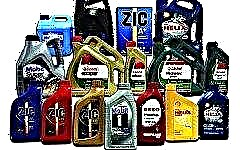

The content of the article:
- Types of oils
- Viscosity
- Performance properties
- Oil selection
- Features of use
One of the fundamental factors in ensuring long-term and trouble-free operation of the engine is high-quality oil and its timely replacement. Whether we are talking about the domestic auto industry or foreign cars, a used car or a recently rolled off the assembly line, going for the first inspection, the right oil will make the life of the car happy and long.
Types of car oils

An inexperienced car owner can get confused by a huge selection of a wide variety of oils. To choose the best oil for your car engine, you need to understand the basic classification.
Mineral oil
It is obtained as a result of distillation, refining and distillation of oil, therefore it is also called petroleum. Due to the high concentration of additives, such oils lose their quality too quickly.
Within the group, they are subdivided into paraffinic, naphthenic, aromatic, differing in the composition of hydrocarbons. For lubrication purposes, the best ingredients are paraffinic oils, which are characterized by good temperature and viscosity.
Another important indicator is the level of sulfur, which is also present in the raw materials. For oil, its content should not exceed 1%, so as not to provoke rapid wear of parts.
Thus, mineral oil is rarely recommended for use, especially if the vehicle is to be used in harsh conditions.
Synthetic
It is born through the synthesis of chemical compounds with certain properties. According to its characteristics, such oil is much superior to mineral oil:
- due to increased fluidity, friction of parts is reduced, which increases power and at the same time saves fuel;
- allows the engine to work stably even at low temperatures;
- due to the high evaporation temperature, the oil is not sensitive to overheating;
- the invariability of the chemical composition provides resistance to oxidation and waxing;
- has a long shelf life.
The high cost of synthetic oils is fully justified by their undoubted advantages, especially if the vehicle is supposed to be operated at low or high temperatures, or other excessive loads.
A kind of middle option between the two previous types is semi-synthetic oil. This combination is cheaper than synthetic and better than mineral, which makes it versatile for moderate climates and medium loads.
It is very easy to get confused in the varieties, especially if each brand produces synthetic, mineral, and semi-synthetic versions. Therefore, the motorist must carefully study the composition of the canister before purchasing it.
Automotive oil viscosity

This indicator determines how easy it is to cold start the engine at low temperatures. To know which oil should be poured into the engine, you need to understand the classification according to international standards:
- The letter "W" hides winter oil - car owners who know English will understand that this is from the word "winter". The numbers in front of the letter indicate the degree of thickening of the oil and, at the same time, the temperature for which it is suitable.
- Summer oil did not get its own letter, only a numerical designation similar to winter oil.
- All-season, combining the qualities of the previous two with the appropriate marking, for example, SAE 5W30.
Performance properties of oil

To classify oil into any category, experts carry out countless tests in special motor installations, evaluating their anti-corrosion properties, detergents, oxidizing and others.
API
This is an American classification that divides liquids into the "S" and "C" groups. For gasoline engines, oil of the "S" class is suitable, respectively, "C" - for diesel ones.
The next letter speaks about the quality of each brand, and the closer it is to the beginning of the alphabet, the better this oil. When the numbers 2 or 4 are added to the letter designation, this means that you have oil for two-stroke or four-stroke engines in front of you. If the label has double marking, this oil is suitable for both diesel and gasoline engines.
Additionally, there is a type of oil marked EC and also has a number. It has energy-saving properties, the level of which is indicated by the figure in the abbreviation.
ACEA
European classification, focusing on the antiwear properties of oils. According to it, class A is suitable for gasoline engines, B and E for diesel engines, and recently a universal class C was released, suitable for both engines.
Oil selection

Before going to a specialty store, you should familiarize yourself with the user manual, which is extremely rare for car owners. It indicates what kind of oil is poured into the engine to provide it with the most comfortable operation.
Automakers make recommendations based on an analysis of many parameters:
- the type and year of manufacture of the engine (namely the engine, not the car);
- operating conditions, divided into medium and heavy;
- engine wear calculated from mileage;
- insignificant, starting from 75,000 km;
- medium - from 100,000 to 150,000 km;
- increased - over 200,000 km.
- compatibility of materials from which the motor and its parts are made with different types of oils.
The instructions in the owner's manual on the best oil to fill the engine should be heeded. Because if the driver replaces the recommended 10w-40 oil with 10w-50, he will get a more viscous fluid. It will not lubricate some elements of the mechanism well enough, which will lead to increased fuel consumption and early wear of the engine.
In principle, pouring more viscous oil than the recommended one is dangerous for the engine. Due to the more difficult pumping by the oil pump, the machine will begin to experience "oil starvation" and unstable operation.
As a rule, the automaker gives an indication of some average viscosity values, adjusted for operating conditions. If the manual refers to a specific brand of oil, it means that the car owner needs to purchase it. This is especially true when the car is under warranty, so that later there are no disagreements during a scheduled inspection. If the warranty period has already expired, you can choose a different oil, whose characteristics will match the recommended ones as much as possible.
Features of the use of oil

So that the oil does not lose its qualities, it must be in certain conditions and temperature conditions. The winter groups provide easy starting of the engine at low temperatures, and the summer ones cool and lubricate the parts most exposed to friction.
Seasonal oil is not very popular, and some manufacturers recommend it only for temporary replacement.
Now, on some car models, gas equipment is installed to save fuel. Such a measure not only saves the car owner's budget, but also increases the period of the scheduled oil change by almost two times.
Engine wear
Just like a person, a car needs different "nutrition" in different years of life. Initially, engineers at the factory fill it with their own oil while the parts are lapping together.It does not differ in any special indicators, but it has specific additives that help components and assemblies to work in. But after running in, you need to go to a higher level in order to extend the resources of the motor. As the vehicle is used, the quality of the oil will have to be reduced again due to its higher consumption due to leaks.
Thus, once you choose a good oil, you will not be able to use it for the entire life of the car. The older the car gets, the more viscous the oil will need to be used.
Changing the engine oil
The standard oil change period is 100,000 km. Aggressive driving style, a diesel engine or short trips in colder temperatures will significantly reduce this mileage.
Also, the oil will "age" faster in a worn out engine, which contains a lot of dust and other wear products. If the machine was purchased second-hand and the new owner does not know about its operating conditions, the oil in the engine should be completely replaced with a new one.
If we are not talking about a complete oil change, but topping it up, it is better not to mix different brands. In completely hopeless situations, the share of another type of oil should not exceed 15% of the total volume, but at the first opportunity this mixture should be replaced with a full-fledged liquid.
And it is strictly forbidden to mix fundamentally different types of oils, for example, synthetics with mineral water. The incompatibility of additives can cause completely unpredictable consequences.











